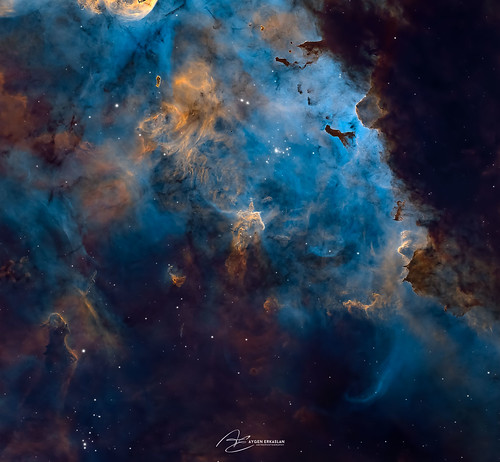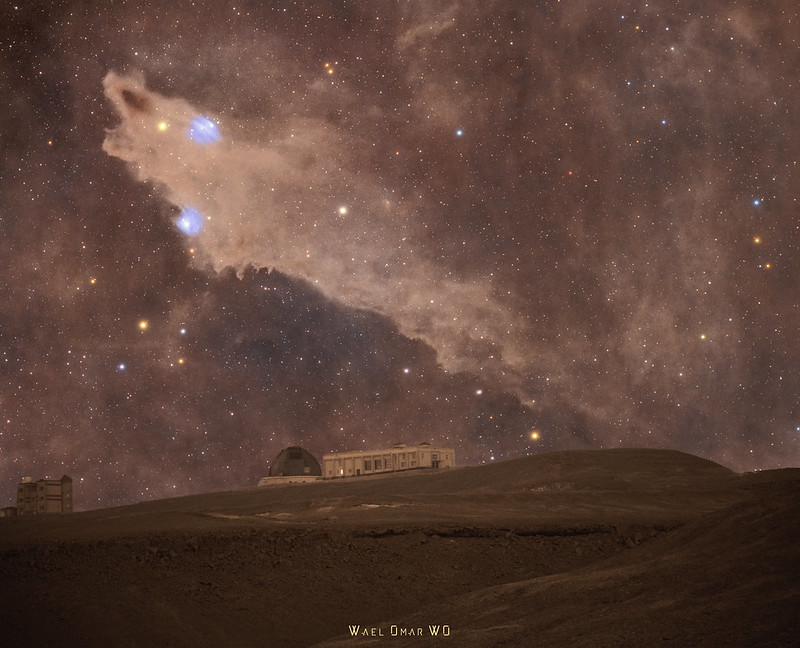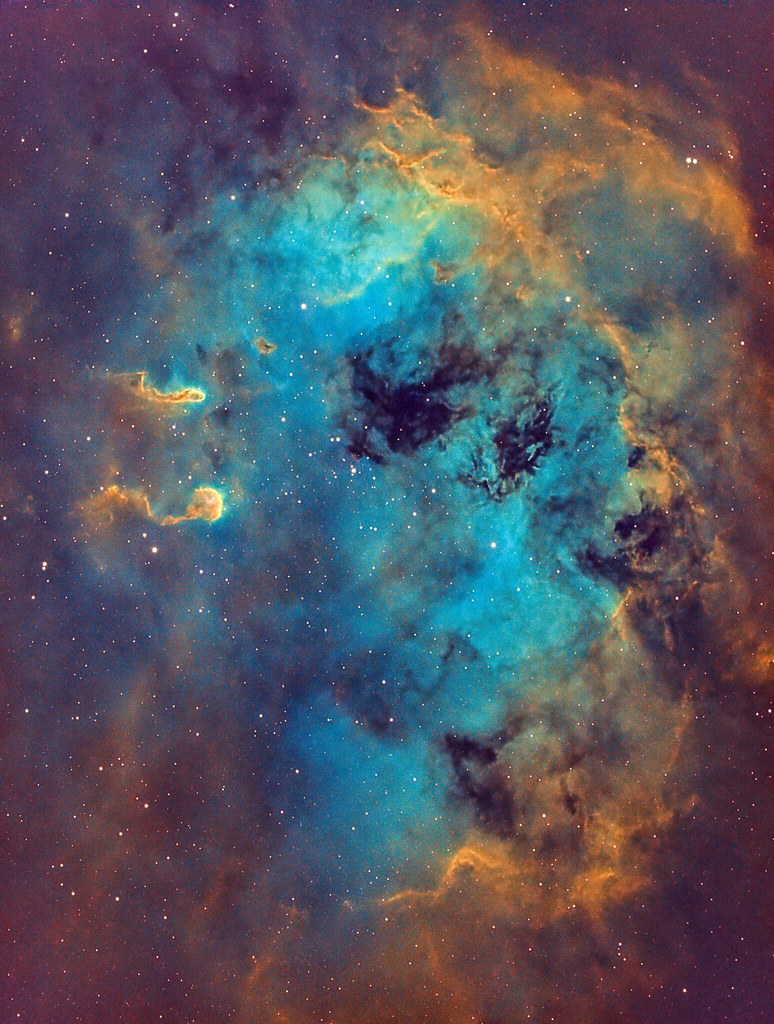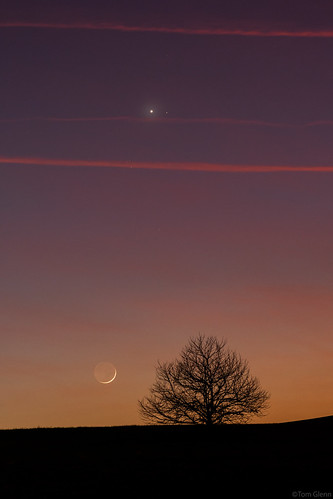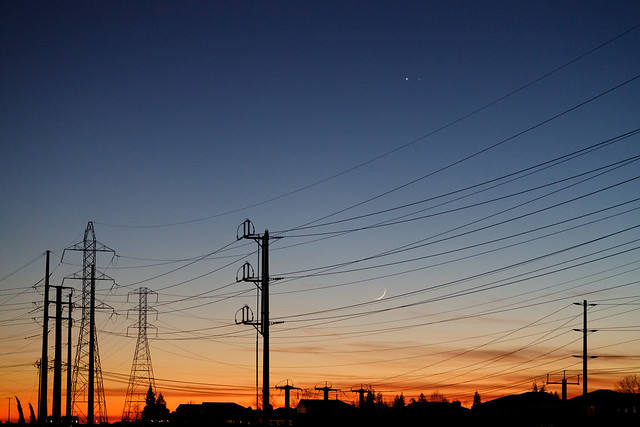"THE GREAT ORION NEBULA"
- Deep Sky 750mm LRGBhA
- Constellation Orionis

The Orion Nebula (M42 or NGC 1976) is an emission nebula in the constellation of Orion. Due to the high apparent brightness of its center above the 4th magnitude, the nebula is clearly visible to the naked eye as part of Orion's Sword south of the three stars of Orion's Belt. Overall, it has an angular extension of about one degree.
The Orion Nebula is a subregion of the interstellar molecular cloud OMC-1 in the Orion molecular cloud complex. It consists mainly of hydrogen. Stars form in the nebula, whose ionizing radiation makes the nebula shine in the visible range. It is therefore also classified as an H-II area. At a distance of about 1350 light-years, it is one of the most active star-forming regions in the galactic neighborhood, which is why it is a preferred study object for studying star formation. It is expected to evolve into a Pleiades-like open star cluster.
The main ionization source of the Orion Nebula is the star θ¹ Orionis C1, which is also one of the most luminous stars known with more than 200,000 times the luminosity of the Sun. However, the immediately adjacent and similarly configured De Mairan's Nebula has a different ionizing source and is therefore not part of the Orion Nebula.
| Object : M42 The Great Orion Nebula
| Stack RGB : 288 Lights R+G+B / 100 Darks / 25 Flats / 500 Bias
| Stack LUM : 576 Lights Luminance / 100 Darks / 25 Flats / 500 Bias
| EBV Tools : Pixinsight / Adobe PS&LR / GraXpert / AstraImage
| Pixinsight: Blur X, Noise X, Star X Terminator, HDR Compilation
| Guiding : PHD2 & ZWO-ASI120 Mono / N.I.N.A.
| M&O : AZ-EQ6 GT Pro / Skywatcher 150/750 PDS
| Filter : Astronomy L/R/G/B
| Stuff : iKK GPU / OCTO+ 2"/ bezel ring / Lacerta MFOK
| Camera : Atik 16200 Mono & Filra / BW 750mm
| Exif RGB1 : BLZ each 64x 5s per frame / UnityGain / f/5
| Exif RGB2 : BLZ each 64x 60s per frame / UnityGain / f/5
| Exif RGB3 : BLZ 16x 180s per frame / UnityGain / f/5
| Exif LUM1 : BLZ 256x 2s per frame / UnityGain / f/5
| Exif LUM2 : BLZ 64x 5s per frame / UnityGain / f/5
| Exif LUM3 : BLZ 256x 60s per frame / UnityGain / f/5
| Total BLZ: 11 hours 11 minutes 52 seconds
Conditions for recordings:
Clear nights, taken directly from the small town at Bortle 7 sky, clear light pollution from city lights.
Best regards,
Thomas ArtOfPix Großschmidt




